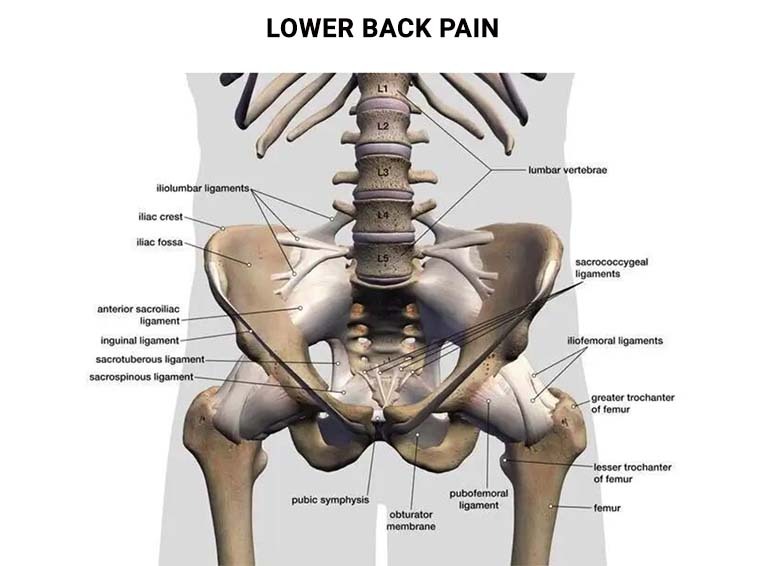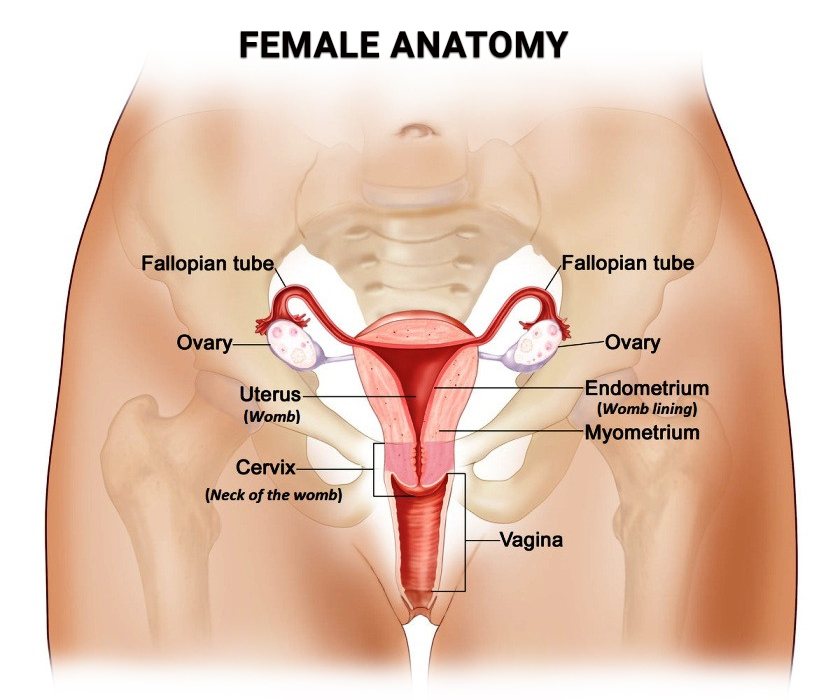Painful periods are common, and lower back pain is one of the most commonly experienced symptoms during this time. Home care, over-the-counter medications, and physical therapy can ease the back pain and many other symptoms associated with menstruation. If your lower back pain continues to increase during menstruation, or you notice a change in the way it is affecting your body, seek professional help. Physical therapy is a natural method that relaxes the body and eases cramping. Based on your specific symptoms and severity and location of back pain, the highly skilled therapists and physicians at the Physical Therapists NYC come up with comprehensive treatment and recovery plans to reduce your discomfort.
Menstruation, also commonly known as the period, is normal vaginal bleeding that occurs as part of a female’s monthly cycle. For most women, menstruation consists of abdominal pain, bloating and headaches, and other discomforting symptoms for at least five days. In addition to the typical symptoms associated with the menstrual cycle, many women also suffer from lower back pain. The low back pain can range from a mild annoyance to debilitating pain, which is located along the center portion of the lower back but seems to affect the entire body.
Back pain for most women begins a few days before the menstrual cycle and usually subsides afterward. The good thing is that it is not something serious and can be managed with medication and home treatments for the most part.
If the pain turns intolerable and begins to affect your routine life and work, consult a doctor or reach out to a physical therapist who will help you manage it with exercise and relaxation therapies. Understanding how it happens or what may be the possible causes behind back pain can help you cope better.

What Causes Low Back Pain During Menstruation?
Lower back pain during menstruation is mainly muscular and believed to result from hormone changes. Prostaglandins, the hormones released during a menstrual cycle to promote uterine contraction to shed the uterine lining, can affect the lower back muscles. An excess of prostaglandins causes dysmenorrheal or painful menstruation. Heavy contractions can lead to pain in the lower back, and this pain can radiate from the lower abdomen into the lower part of the back.
In some cases, health issues like endometriosis or uterine fibroids can cause intense lower back pain during periods. If your back pain persists or becomes intolerable, consult your doctor regarding diagnosis and treatment options. They will rule out medical issues behind your condition and recommend ways to relieve the pain.
Some common causes of back pain include:
Primary dysmenorrhea
It means that getting a period causes pain, and there is no medical reason behind it. Most women experience some form of primary dysmenorrhea such as cramping, aches, or lower back pain. Prostaglandins are the main reason behind cramps during periods.
Immediately before a period, the endometrial cells in the uterus manufacture prostaglandins. While they play a crucial role in inflammation and healing, the accumulation of prostaglandins can result in cramping. As the uterine lining sheds during menstruation, the body releases fewer prostaglandins, which improves the pain.
Uterine contractions can also result in cramps and pain when the uterus contracts to get rid of its old lining. For some women, the pain of these contractions can cause lower back pain.
Secondary dysmenorrhea
It refers to back pain during periods because of some injury or a medical condition. The pain may be present at other times too, but it worsens during menstruation.
Some common causes of secondary dysmenorrhea include:
Endometriosis
In some women, uterine tissue grows outside of the uterus, and it can wrap around other organs, causing intense pain. This condition is called endometriosis. It can result in very heavy or clotty bleeding as well as bleeding in between periods. Women may also experience pain in the area with the endometrial tissue.
Some women have spinal endometriosis, which causes the tissue to grow around the spinal or other areas of the back, resulting in intense back pain. Birth control pills or surgery is recommended by doctors to treat endometriosis.
Uterine fibroids
They are noncancerous growths in the uterus that often become quite large. They cause sharp pain, including back pain, during periods.
The good thing is that even fibroids that cause severe symptoms may go away without treatment. At times doctors may recommend surgery to remove them.
Adenomyosis
Tissues that line the uterus grow into the muscles of the uterus. This condition is known as adenomyosis.
Symptoms of adenomyosis include:
- Painful periods;
- Pain during sex;
- Bleeding between periods.
The doctor can determine the size of the uterus during a pelvic exam and recommend treatment depending on the severity of the condition. Hormone therapy, surgery, and in some cases, removal of the uterus can provide relief.
Hormonal birth control pills or stronger pain medications are prescribed by healthcare providers to reduce the intensity of period cramps and ease the symptoms of endometriosis.

Tips to Reduce Painful Cramping and Low Back Pain
Pain in the lower back during menstruation can be distressing, but it is usually not a sign of a serious medical problem. The following tips may help to manage the pain:
- Start taking over the counter anti-inflammatory or pain-relieving medication a couple of days before the periods begin to avoid the pain;
- Exercise regularly as women who exercise regularly experience less painful menstrual cramps and back pain;
- Eat a healthy diet and take nutritional supplements that contain vitamin B and magnesium;
- Stay hydrated by drinking lots of water;
- Take hot bath or showers;
- Avoid too much caffeine and chocolate.
If your pain is not caused by an underlying medical condition but results from muscle spasms, physical therapy can work wonders for you. Moderate intensity aerobic exercises are known to reduce bloating and the pain of cramping. They also enhance blood circulation and release feel-good hormones called endorphins.
Treating Back Pain Resulting From Menstruation
Depending on the exact causes of your back pain, the doctor may recommend certain treatments. They include:
- Birth control pills that contain estrogen and progestin;
- Vaginal ring or patches;
- Progesterone;
- Nonsteroidal anti-inflammatory drugs reduce the number of prostaglandins made by the body.
Home Remedies to Reduce Lower Back Pain During Menstruation
Nonsteroidal anti-inflammatory drugs (NSAIDs) are best for getting rid of lower back pain during menstruation as they reduce the inflammation caused by prostaglandins. They are ideal for reducing period cramps.
Home remedies that provide relief from back pain include:
- Applying a hot pack or a hot water bottle to the painful area to ease the cramping muscles;
- Stretching;
- Having sex or masturbating;
- Practicing relaxation and mindfulness techniques such as yoga, meditation, or deep breathing that relax the muscles;
- Trying alternative treatments such as acupuncture;
- Going for a massage.
If your low back pain fails to subside even after the menstrual cycle ends or you develop leg pain and weakness, seek medical attention. It may be something more than the typical back pain resulting from prostaglandin release during menstruation and needs proper diagnosis and treatment.
When to See a Doctor
Debilitating back pain accompanied by menstruation can be very annoying and restrict your activities during these days. Seeing your primary care doctor is essential if your back pain continues to increase with every passing cycle and begins to affect your life.
You should seek medical attention in case of the following:
- When home care tips do not work or stop working;
- Medications fail to provide relief;
- There are other symptoms too, such as bleeding between periods, pain during sex, or pain in the vagina;
- Periods are accompanied by pain, or the pain begins to worsen;
- Intense pain that restricts your movement, and you cannot do anything except lie down;
- Pain while walking, standing, or bending and lifting things;
- Muscle spasms;
- Heavy bleeding soaks through one or more tampons or pads per hour for more than 2 hours in a row.
If these home remedies fail to provide relief and you continue to experience pain in your lower back during menstruation, consult a doctor. The doctor will identify the cause of the pain. If it is secondary dysmenorrhea, treating the underlying condition can reduce or even eliminate the pain.
A period is different for every woman and brings a lot of changes in her life and body. Lower back pain during menstruation is experienced by many women, although the severity and duration of the pain may vary depending on the exact causes. The top-rated therapists at Physical Therapists NYC use cutting-edge techniques and comprehensive services to ease your discomfort. They focus on your symptoms and levels of pain during the menstrual cycle to map a plan of progress that helps you get back to feeling better and healthier in the long run. The physician’s and therapist’s coordinated care ensures you get the best manual therapy and personal care that makes this time of the month easy for you without giving up your routine life.





